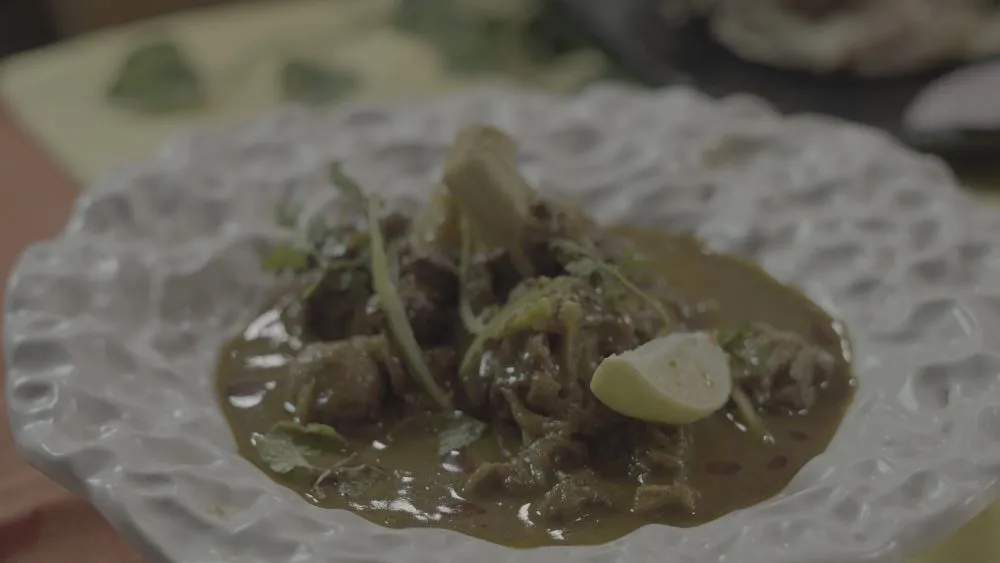
Nihari Recipe

20 mins

2-3 people

15 mins
Introduction:
Let me take you on a journey to the aromatic streets of Old Delhi, where the air is filled with the tantalizing scent of spices and slow-cooked meats. It was on one chilly winter evening that I first encountered the soul-warming delight known as Nihari. Nestled in a bustling alleyway, a humble eatery served this traditional dish that instantly captured my heart. The rich aroma of simmering spices and tender meat enveloped me as I took the first spoonful, transporting me to a realm of culinary bliss. Since that memorable evening, recreating the flavors of Nihari has become a cherished tradition in my kitchen, evoking fond memories of that enchanting night.
Ingredients:
-
2 tsp Cumin seeds
-
2 tsp Coriander seeds
-
6-7 Cloves
-
5-6 Black peppercorns
-
1 Cinnamon stick
-
4-5 Green cardamom
-
3-4 Black cardamom
-
1 tsp Saunf (Fennel seeds)
-
7-8 Rose Petals
-
½ inch Pan ki Jad (Mace)
-
½ pinch Nutmeg
-
1-2 Peepli
-
½ inch Khas ki Jad
-
½ inch Pathar Phool (Stone Flower)
-
1 Javitri (Mace)
-
1-2 Star Anise
-
1-2 Bay leaves
Ingredients of Nihari
-
4 tbsp Mustard oil
-
300 gms Mutton
-
1 tsp Kewra water
-
300 gm Sliced onion
-
1 tsp Salt
-
3 tbsp Ginger garlic paste
-
1 tsp Turmeric powder
-
1 tsp Red chili powder
-
2-3 tsp Nihari masala (as per taste)
-
1 tbsp Ghee
-
1 tsp Atta (Wheat flour)
-
1 tsp Besan (Gram flour)
Instructions:
Prepare Nihari Masala:
-
Dry roast all the masala ingredients in a pan until they release a fragrant aroma. Allow them to cool completely.
-
Once cooled, grind the roasted spices into a fine powder to create the Nihari masala.
-
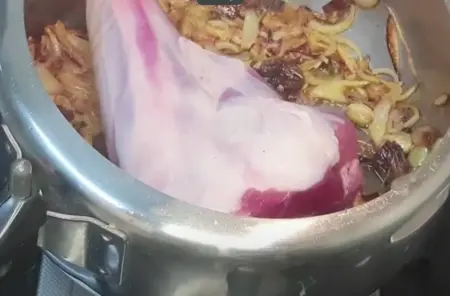
Cook the Nihari:
-
Heat mustard oil in a thick-bottomed pan until it begins to smoke. Add kewra water, quickly cover with a lid, and turn off the flame.
-
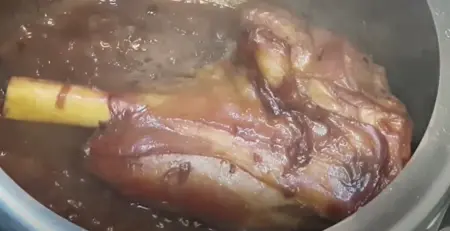
-
Add the mutton to the pan and sauté it with sliced onions and salt until the onions are golden and the mutton is slightly browned.
-
Stir in the ginger-garlic paste along with a small amount of water. Continue cooking until the mutton is well browned and the raw aroma of the ginger-garlic paste fades.
-
Add turmeric powder, red chili powder, and Nihari masala. Mix well to coat the mutton evenly with the spices.
-
Pour in the stock and let the mixture simmer on a low flame for 45 to 90 minutes, allowing the flavors to meld and the mutton to become tender.
-
In a separate pan, heat ghee and roast the wheat flour and gram flour until they turn a nutty brown color. Add this mixture to the simmering Nihari and bring it to a boil.
-
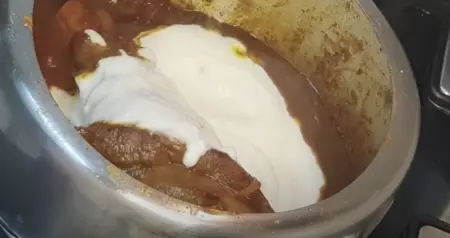
Garnish:
-
Garnish the Nihari with fried onions, lemon wedges, and green chili julienne before serving
-
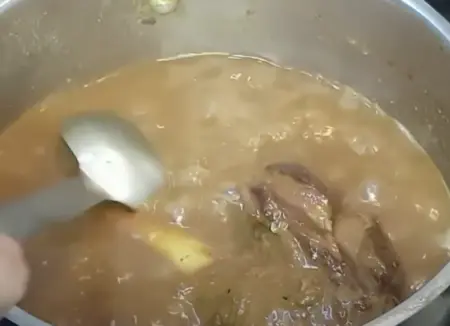 \.
\.
About the Recipe:
Embark on a culinary journey with Nihari, a beloved slow-cooked stew that originated in the streets of Old Delhi. This iconic dish is characterized by its tender meat, slow-cooked to perfection in a flavorful medley of spices, creating a rich and aromatic gravy. Traditionally enjoyed for breakfast or as a hearty meal, Nihari is a testament to the culinary heritage of India, with each bite offering a symphony of flavors that delights the senses. Whether served with naan or steamed rice, Nihari is sure to warm your heart and soul with its comforting embrace.
Cooking Tips:
- Slow Cooking is Key: Allow the Nihari to simmer slowly over low heat to allow the flavors to develop and the meat to become tender and succulent.
- Skim off Excess Fat: Remove any excess fat or oil that rises to the surface of the Nihari during cooking to achieve a lighter and more flavorful gravy.
- Rest Before Serving: Let the Nihari rest for a few minutes after cooking to allow the flavors to meld together and intensify.
Pairing Guide:
- Naan or Roti: Serve Nihari with freshly baked naan or roti for a classic pairing that complements the rich flavors of the dish.
- Steamed Rice: Enjoy Nihari with steamed rice for a comforting and satisfying meal that is perfect for any occasion.
- Pickled Onions and Green Chilies: Accompany Nihari with pickled onions and green chilies for a tangy and spicy contrast that enhances the overall dining experience.
Frequently Asked Questions about Nihari:
-
What is Nihari?
- Nihari is a slow-cooked stew originating from the Indian subcontinent, known for its tender meat and rich, aromatic gravy.
-
What cuts of meat are used in Nihari?
- Nihari is typically made with cuts of beef or mutton, such as shank or shoulder, which are slow-cooked to perfection.
-
Can I make Nihari with chicken?
- Yes, you can substitute beef or mutton with chicken to make chicken Nihari, which is equally delicious and flavorful.
-
What spices are used in Nihari?
- Nihari is seasoned with a blend of spices including cinnamon, cloves, cardamom, bay leaves, and black peppercorns, which infuse the dish with its signature flavor.
-
How long does it take to cook Nihari?
- Nihari is a slow-cooked dish that typically takes several hours to cook on low heat, allowing the flavors to develop and the meat to become tender.
-
Can I prepare Nihari in advance?
- Yes, Nihari can be prepared in advance and reheated before serving, allowing the flavors to deepen and intensify over time.
-
What is the best accompaniment for Nihari?
- Nihari is traditionally served with naan or roti, although it can also be enjoyed with steamed rice for a comforting meal.
-
Is Nihari spicy?
- Nihari can be adjusted to suit your taste preferences, with the level of spiciness determined by the amount of chili powder or green chilies used in the recipe.
-
Can I freeze leftover Nihari?
- Yes, you can freeze leftover Nihari in an airtight container for up to 3 months, allowing you to enjoy this delicious dish at a later time.
-
Is Nihari a healthy dish?
- While Nihari is rich in flavor and hearty in texture, it can be high in calories and fat due to the slow cooking process and use of meat. However, you can make healthier modifications by using lean cuts of meat and reducing the amount of oil used in the recipe.
